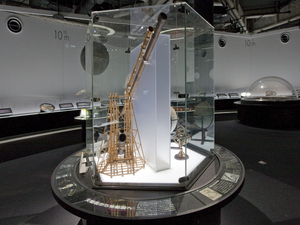Nagoya City Science Museum
TOP > Exhibition Guide > Floor Map> From Ptolemaic to Copernican System
From Ptolemaic to Copernican System



Purpose of Exhibition
The image of the Universe created by Ptolemy in the 2nd century A.D. had dominated European society as the Bible of astronomy for about 1,300 years, from ancient times to the Middle Ages and early modern period.
In the 16th and 17th centuries, the paradigm of the Universe was drastically changed: Copernicus advocated the heliocentric theory that overturned conventional knowledge, Galileo revealed the real nature of the Universe through a telescope, and finally Newton developed a new view of the world governed by the law of universal gravitation.
This exhibit will show you the transition of cosmology, with telescopes and actual celestial globes.
Additional Knowledge
[Views of the Universe through the Telescope]
In 1609, Galileo first turned his homemade telescope toward the world of the stars. He made many great discoveries such as the craters of the moon, the ring of Saturn, the moons of Jupiter, and sunspots; and also he deduced that the Milky Way is "congeries of innumerable stars" (Sidereus Nuncius (Starry Messenger) 1610, by Galileo Galilei (1564-1642)). His observation of the phases of Venus contributed to confirm the Copernican theory. A new scientific instrument, the telescope, gave us a little glimpse of the true nature of the Universe, previously unknown.
After that, telescopes grew in size and complexity with ingenuity and creativity. As they get more large and powerful, we are able to see farther out into space than ever before. Eventually, humankind overcame the view prevailed for centuries, "A Celestial Sphere: an orb with fixed stars," and instead we have the view of an infinite Universe with innumerable stars floating in an extensive space. The telescope has brought the most radical change of view of the Universe in the history.
This page was last edited on 15 June 2022.
Article by Astronomy Section
